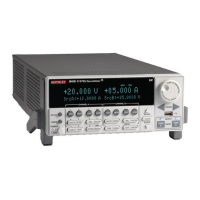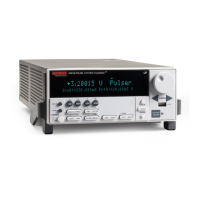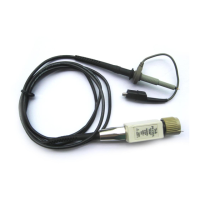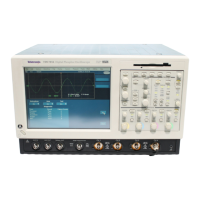Also see
smuX.trigger.source.action (on page 9-270)
smuX.trigger.source.linearY() (on page 9-272)
smuX.trigger.source.logY() (on page 9-274)
Sweep operation (on page 2-51)
smuX.trigger.source.logY()
This function configures an exponential (geometric) source sweep.
Details
This function configures the source action to be a geometric source sweep in a subsequent sweep.
During the sweep, the source generates a geometric series of ascending or descending voltage or
current changes called steps. Each step is larger or smaller than the previous step by a fixed
proportion. The constant of proportionality is determined by the starting value, the ending value, the
asymptote, and the number of steps in the sweep. The number of source steps is one less than the
number of sourced points.
The points parameter does not set the number of steps in a sweep, but rather is used to calculate
source values within a subsequent sweep. If the subsequent sweep has more points than specified in
points, the source restarts at the beginning. This means that if the trigger count is greater than the
number of points in a sweep as configured, the SMU satisfies the trigger count by restarting the
sweep values from the beginning.
If the subsequent sweep has fewer points than specified in points, endValue is not reached during
the sweep. This means that if the trigger count is less than the number of source values configured,
the SMU satisfies the trigger count and ignores the remaining source values.
In cases where the first sweep point is nonzero, it may be necessary to pre-charge the circuit so that
the sweep returns a stable value for the first measured point without penalizing remaining points in
the sweep.
With logarithmic sweeps, it is usually necessary to allow the source to autorange to maintain good
source accuracy when sweeping over more than one decade or across range boundaries.
The asymptote parameter customizes the inflection and offset of the source value curve. This
allows log sweeps to cross zero. Setting this parameter to zero provides a conventional logarithmic
sweep. The asymptote value is the value that the curve has at either positive or negative infinity,
depending on the direction of the sweep.
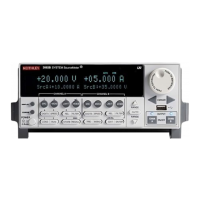
